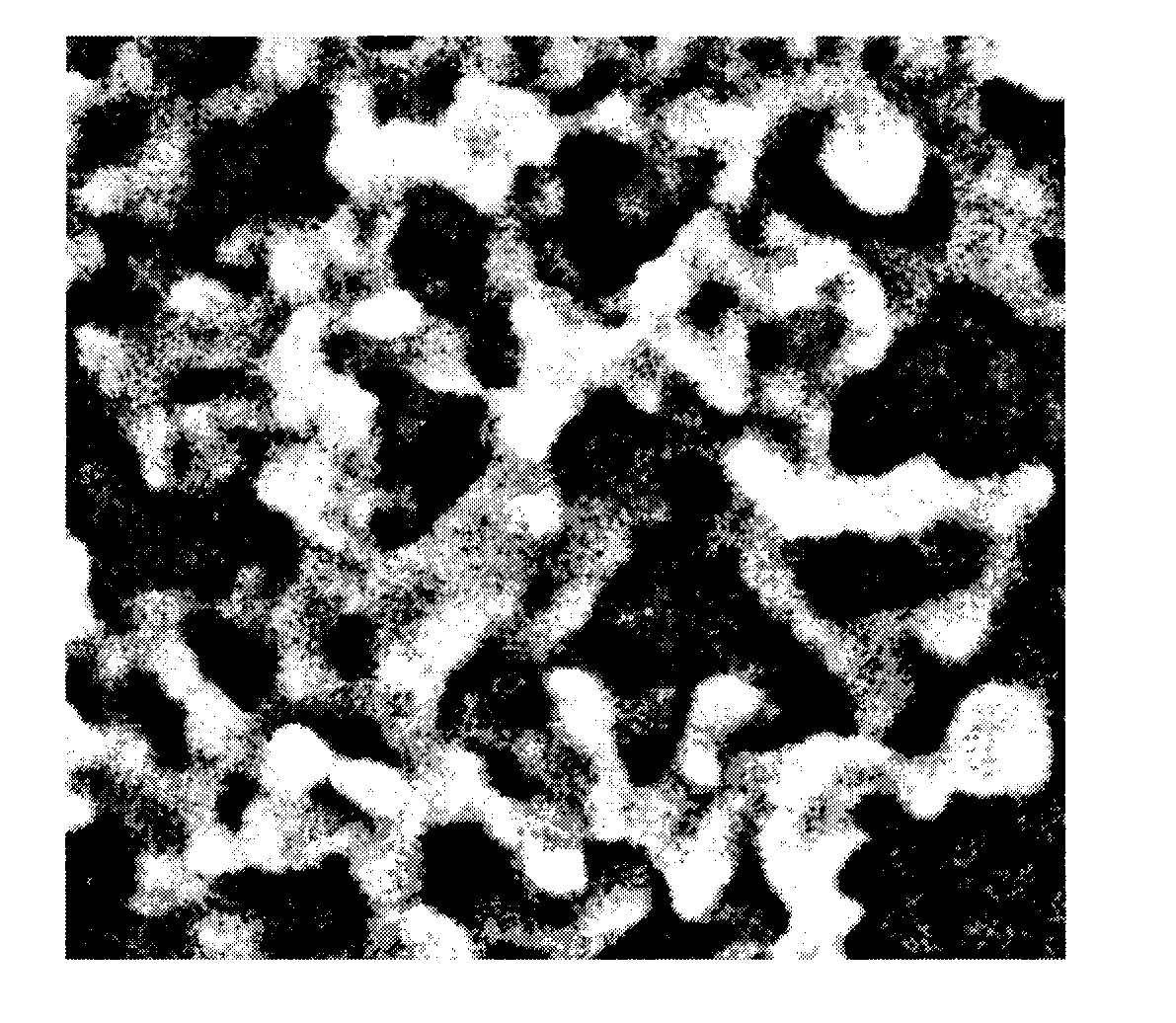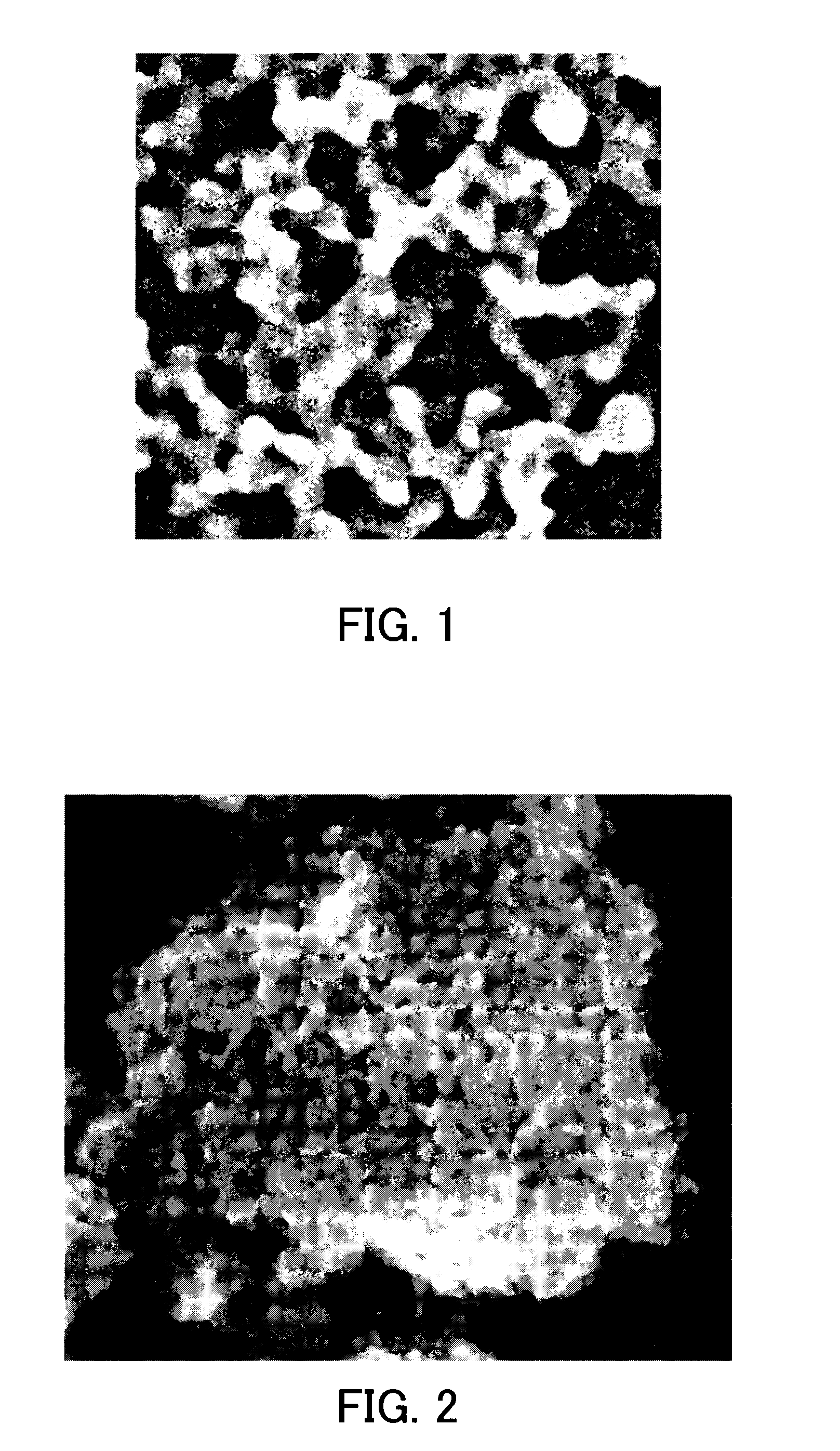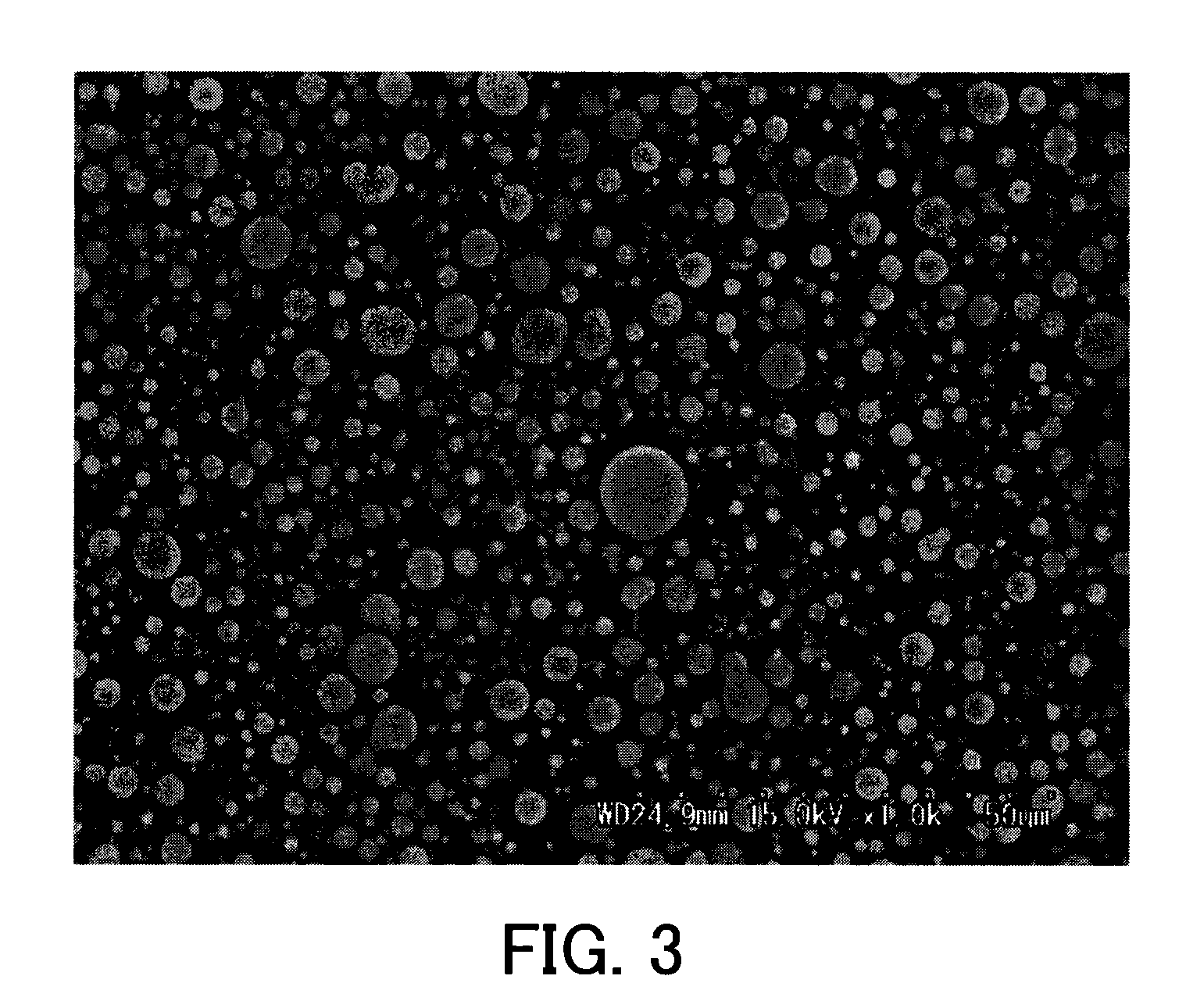Dental composition and composite resin
a composite resin and composition technology, applied in the field of dental composition and composite resin, can solve the problems of difficult to increase the content of filler, difficult to obtain satisfactory gloss, and increase the viscosity of the resulting paste, and achieve excellent paste handling properties, excellent surface smoothness and gloss, and high strength
- Summary
- Abstract
- Description
- Claims
- Application Information
AI Technical Summary
Benefits of technology
Problems solved by technology
Method used
Image
Examples
preparation example 1
Preparation of Precursor of Filler (B)
[0159]250 kg of zirconium oxychloride (ZrOCl2.8H2O, manufactured by Taiyo Koko Co., Ltd.) was added to 4375 kg of pure water at a temperature of 15° C. and they were stirred to dissolve zirconium oxychloride therein.
[0160]250 L of aqueous ammonia with a concentration of 15% by weight was added slowly, under stirring, to the aqueous solution of zirconium oxychloride to cause a neutralization reaction of the zirconium oxychloride under the temperature condition of 15° C. Thus, a slurry containing the precipitate of zirconium oxide hydrate was obtained. The pH of this slurry was 8.5.
[0161]Next, this slurry was filtered, and the resulting cake-like material was washed repeatedly with pure water to remove by-products of the neutralization reaction and unreacted substances. As a result, 860 kg of a cake-like material consisting of 10% by weight of zirconium oxide hydrate in terms of ZrO2 and water was obtained.
[0162]Next, 45800 g of pure water was add...
preparation example 2
Preparation of Spherical Dried Amorphous Powder 1A (with Average Particle Size of 10 μm)
[0171]The prepared solution 1D was pre-dried by spray drying in a micromist dryer “MDL-050” (manufactured by Fujisaki Electric Co., Ltd.) under the conditions of an inlet temperature of 200° C., an internal temperature of 70° C., an air flow rate of 30 mL / min, and a liquid flow rate of 23 mL / min. The powder thus obtained was dried by hot air at 200° C. for one hour. Thus, a spherical dried amorphous powder having an average particle size of 10 μm (hereinafter referred to as a dried powder 1A) was obtained. The dried powder 1A was observed in a SEM micrograph, and as a result, it was found that the dried powder 1A consists of spherical particles (100% spherical powder).
preparation example 3
Preparation of Spherical Dried Amorphous Powder 2A (with Average Particle Size of 3.0 μm)
[0172]A spherical dried amorphous powder having an average particle size of 3.0 μm (hereinafter referred to as a dried powder 2A) was obtained in the same manner as in Preparation Example 2 except that the prepared solution 1D was dried under the conditions of an inlet temperature of 200° C., an internal temperature of 70° C., an air flow rate of 57 mL / min, and a liquid flow rate of 15 mL / min. The dried powder 2A was observed in a SEM micrograph, and as a result, it was found that the dried powder 2A consists of spherical particles (100% spherical powder) (see FIG. 3).
PUM
| Property | Measurement | Unit |
|---|---|---|
| Length | aaaaa | aaaaa |
| Length | aaaaa | aaaaa |
| Fraction | aaaaa | aaaaa |
Abstract
Description
Claims
Application Information
 Login to View More
Login to View More - R&D
- Intellectual Property
- Life Sciences
- Materials
- Tech Scout
- Unparalleled Data Quality
- Higher Quality Content
- 60% Fewer Hallucinations
Browse by: Latest US Patents, China's latest patents, Technical Efficacy Thesaurus, Application Domain, Technology Topic, Popular Technical Reports.
© 2025 PatSnap. All rights reserved.Legal|Privacy policy|Modern Slavery Act Transparency Statement|Sitemap|About US| Contact US: help@patsnap.com



